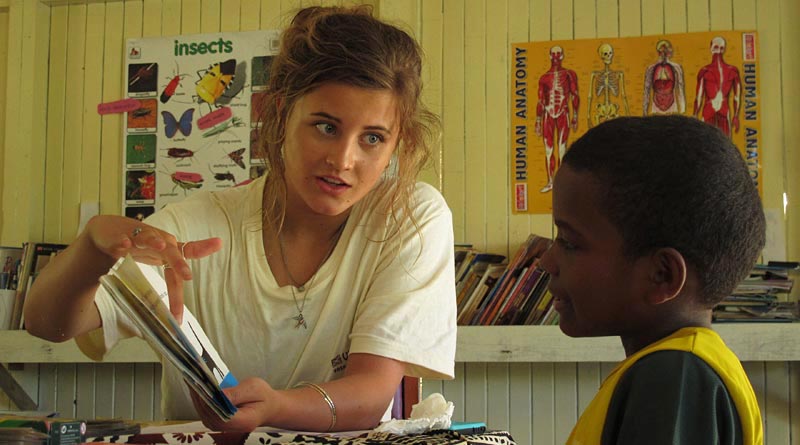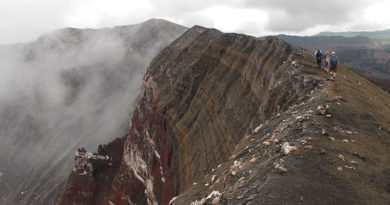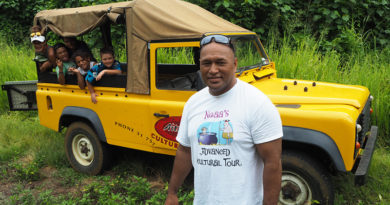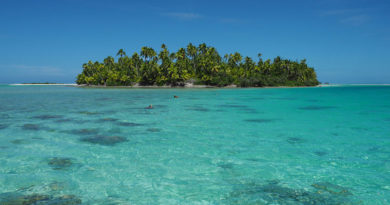Lending a hand in Fiji
What started as a way of saying thank you to the villagers of Fiji’s Yasawa Islands has morphed into an international volunteer programme boosting education, agriculture, water supplies and the marine environment.
The Yasawas — an arc of 20 or so sparsely populated islands northwest of Viti Levu, Fiji’s main island — have only been seriously opened up to tourism since the early 2000s.
Although beautiful, with vibrant coral reefs, palm-fringed beaches and steep volcanic peaks, the Yasawas share many of the problems facing other small Pacific islands. They include limited access to education, water shortages, a restricted diet, and health conditions such as type-2 diabetes.
Some of those problems are now being tackled, in a small way at least, by a ‘voluntourism’ programme called Vinaka Fiji.
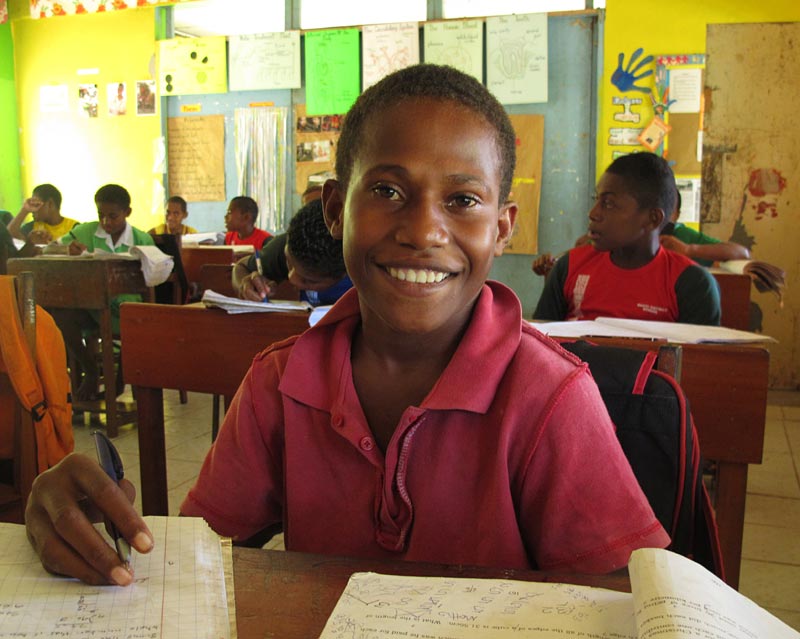
Operations manager Elenoa Nimacere says the scheme sprang from a passenger ferry service set up by a New Zealand-based duo in 2002. Called Awesome Adventures Fiji, the daily catamaran opened the islands up to tourism and led to an explosion in the number and variety of resorts on the islands.
Before 2002 the only accommodation options in the Yasawas were a few backpacker lodges, served by uncomfortable and risky fishing boats from the mainland port of Lautoka, and an even smaller number of top-end resorts.
From early on the operators of Awesome Adventures helped provide basic needs for the villages that resorts leased land from, or depended on for staff, but the aid was delivered in an informal, ad hoc way.
The company’s help was formalised in 2010 through the Vinaka Fiji programme, set up to thank the people of the Yasawas for sharing their islands with the outside world. ‘Vinaka’ is Fijian for ‘thank you’.
The Fijian-led scheme makes use of overseas volunteers who pay to stay at a resort in the Yasawa Islands, but instead of lounging on a beach or snorkelling coral reefs, they work on a range of projects aiming to improve villagers’ lives.
Vinaka Fiji currently operates in three areas: Education, marine conservation and sustainable communities/agriculture.
Elenoa says said the programme averages seven volunteers at any one time but she hopes to increase that to 10 in each area.
“It’s a way of dipping your toe into the volunteering pool, because you can do as little as week or two. You don’t have to commit to a year,” she says.
Back to school
One such volunteer is 18-year-old Holly Satterfield from Salt Lake City in the USA.
Each day Holly is collected by boat from her resort and taken to a village on nearby Naviti Island. The trip takes anything from 15 minutes to half an hour, depending on the sea. If there’s a big swell running the volunteers will arrive dripping and possibly a little queasy.
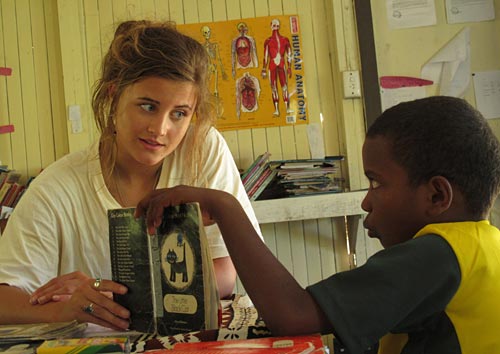
Then Holly and fellow volunteers wade through the shallows to the beach off Marou village, followed by a short walk to 130-pupil Naviti District School where they will spend the day helping children struggling with reading.
Although Fijian is spoken at home in the Yasawa Islands, Fiji’s official language – and the language of instruction at schools – is English.
Today is Holly is helping Marika, a Year 3 pupil, with one-on-one reading recovery. He has made good progress and, like his schoolmates, is eager to learn, she says.
“They just love reading. As soon as you put one book down they want another.”
Holly says she has long wanted to take part in a humanitarian project. A member of her church gave her the idea of going to Fiji, and her parents and brother decided to join her.
She did a little research on dress and customs beforehand but otherwise had little idea what to expect.
“I’m really glad we came to Fiji. The people are amazing. They have so little but they’re so inspiring, so full of life and energy. We’re supposed to be here to help them, but we feel like they’ve helped us out more.”
Other projects include establishing kindergartens to give children a head-start in education and an early childhood programme empowering mothers to teach their children, Elenoa says.
“We’re giving them the fishing rod and letting them fish,” she says.
Underwater aid
American marine biologist Dan Bowling, based at Barefoot Resort on Drawaqa Island, is in charge of the marine conservation volunteers.
Volunteers need to be certified divers but don’t need a background in marine biology.
They are put to work carrying out reef checks and fish counts, as well as tallying crown of thorns starfish, sea urchins and sea cucumbers, all of which offer clues about the ecosystem’s health.
The data is shared with universities and sent to a global reef database.
Volunteers with marine science experience can get involved in more advanced work such as researching the islands’ little understood manta rays, gentle giants related to the stingray but with a wingspan of up to 4.5m and weighing up to a tonne.
Marine volunteers can also be called on to help with monitoring and removing crown of thorns starfish. These voracious coral grazers are a natural part of Fiji’s underwater ecosystem but the loss of their main predators, giant clams and big reef fish, means their numbers have exploded.
“If left unchecked they could destroy important reefs that Fiji depends on for tourism,” Dan says.
Volunteers have also set up a clam nursery, a first step towards reintroducing locally extinct giant clams, and are trying to reduce sea cucumber harvesting by providing villagers with alternative sources of income.
Help on tap
Perhaps the volunteers with the most direct impact on quality of life in the drought-prone islands are those working to improve rainwater collection systems.
The Yasawas’ dry climate is a boon for tourists but can be tough on villagers. When bores and rainwater tanks run dry, drinking water has to be shipped, at considerable cost, from the mainland.

One of Vinaka Fiji’s aims is to improve rainwater harvesting to the point that every villager has access to five litres of drinking water per person per day, in line with World Health Organisation recommendations.
American Scott Satterfield, Holly’s father, has been using his construction industry experience to travel around Naviti Island checking tanks and guttering, carrying out repairs, and designing systems to deliver more and cleaner water.
Helping him is 18-year-old Nick Jackman from the UK who initially considered volunteering in Africa. However, most programmes were booked up and few offered a chance to help for just four weeks, so he tried the Pacific instead.
Each day he travels to a different village, measuring houses for new guttering and tanks, or repairing existing systems.
“A lot of rainwater systems have been cyclone damaged, others have been poorly built. Up north the government dropped off water tanks but no taps or guttering, so they’ve been sitting there for a year without a drop of water going in. Locals just don’t have the tools or supplies to install them,” he says.
Nick could have gone on holiday for the same money but says the volunteer scheme is more rewarding.
“It’s nice to give something back. The Fijians are the most lovely people I’ve ever met. Nothing’s too much trouble.”
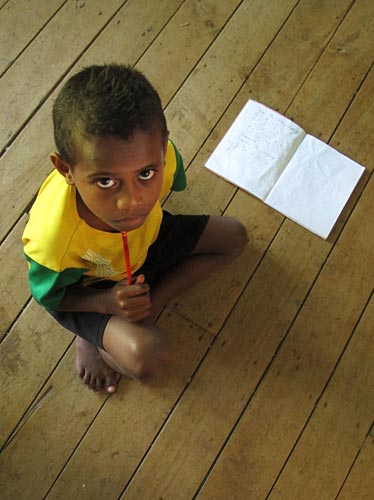
Vinaka Fiji volunteers have also helped repair classrooms damaged by Cyclone Evan at Yasawa High School, in Marou village, and have upgraded its rainwater collection systems.
Principal Tomasi Salusalu says the school has benefited greatly from the scheme.
“They’re developing our water system, they’ve bought guttering and repaired tanks. In past droughts we’ve had had to ship drinking water in from Lautoka, which is very expensive. But now it’s not a problem,” he says.
Other sustainable communities projects include setting up gardens growing vegetables such as cucumbers, beans and capsicums to supplement the usual root crops such as taro and cassava.
The new crops give the villagers more varied diets as well as new sources of income. The resorts also benefit because they can buy vegetables locally instead of having to ship them from the mainland.
Elenoa says villagers have responded well to the programme, setting up their own committees to further improve health, education and rainwater harvesting.
“I think it’s a great programme because we are here all the time, so our projects are sustainable. We don’t just give and walk out.”
How to volunteer
Vinaka Fiji accepts volunteers for one to four weeks at a time to help with its marine conservation, education and sustainable communities projects.
Volunteers are based at Barefoot Island Resort in the Yasawa Islands, a three-hour ferry trip from Nadi’s Port Denarau.
Prices vary according to the programme and style of accommodation chosen. In 2014 the education and sustainable communities programmes started at F$1520 a week with a dorm bed, F$1780 for a double/twin bure and F$2030 for a deluxe bure. (One Fiji dollar was NZ$0.69/US$0.48 in May 2018.)
The marine conservation programme started at F$2160 a week in the dorm, F$2420 for a double/twin bure and F$2675 for a deluxe bure.
The price per week drops for longer stays. All include three meals a day. Volunteers also pay a donation to the projects ranging from F$200 for one week to F$500 for four.
See www.vinakafiji.com.fj and www.fiji.travel for more information.
My visit to the Vinaka Fiji programme was assisted by Fiji Tourism, Awesome Adventures Fiji and Barefoot Island Resort. First published in The Northern Advocate and the New Zealand Herald, June 2014.

